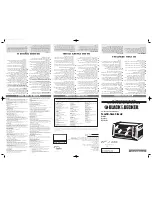
13
7.1
Heating up
1.
Check the water volume in the heat system on the thermomanometer.
2.
Open the closing armatures between the boiler and the heat system.
3.
Clean out the grate, ashtray, smoky channels and boiler walls.
4.
Spread out the kindling through the ash door with the stoker – hole on a cleaned grate along its entire depth.
5.
Set the smoky flap in the chimney – pot to position – open and close the stoker door.
6.
Set the kindling afire through open ash door and stoker door.
7.
Close the stoker hole and ash door and fully open the stifling
8.
Thinner layout of the basic fuel to be put up on the burning wood.
9.
After its good burning up more fuel to be put up to the bottom part of the stoker hole, the fuel to be stacked to a uniform layout along its
entire boiler depth.
10.
As soon as the fuel grades to a dark red flame the air rose of the secondary air input on the stoker hole to be opened with an instrument.
11. After flames become yellow the air rose of the secondary air input to be closed.
The manufacturer recommends to heat by combustion from above. This method is more difficult, but more effective. Coal fired from above heats
the below situated fuel, and its gasification proceeds. Incurred flammable gases will burn off, and as a result the heat arises, which influences
increase of effectiveness. Flame is decreased during combustion unless only cocked coal remains, which combustion will ensure several-hours
operation of the boiler. This method of combustion increases constant heat-ability, decreases consumption of fuel, and mainly decreases
emissions of pollutants into the atmosphere.
1.
Pour coal to the empty fire-grate of the boiler approximately to the half-high of the heating chamber.
2.
Put rough pieces of wood to the coal to the high about 5 cm so that the coal is fully covered. Put to the middle on it one more layer of
narrower pieces of wood (Ø 1 cm)
3.
Further place a kindling on the wood (fine chippings, straw, paper).
4.
Close the ash-pan door. Lightly open the throttle valves by means of the throttle screw approximately on 1 cm.
5.
Open the air rosette on the stocking door.
6.
Fire the kindling and close the stocking door.
7.
If the boiler is equipped with a draught regulator, set temperature to 60 °C.
8.
When the kindling begins to burn, you can let the boiler spontaneously burn. However, while first several burning-up, we recommend you
to stay near the boiler, unless you are sure that the boiler is really burning. In case that the boiler stops to burn, it is necessary to open
lightly the throttle valve.
9.
During first 30 min. you can see smoke from the chimney, but it will be in smaller quantity than during typical burning. Coal will burn slower
and with less intensiveness; temperature will increase slower – but it is a normal phenomenon. As soon as a burning layer arises, white
smoke begins to decrease.
10.
As soon as the fuel passes to dark-red glow, it is necessary to close the throttle valve by about 1-2 mm and close the rosette of the
stocking door.
11.
From this time you can let the boiler burn. It is not necessary to go to the boiler room; we don’t recommend poking the fire-grate, the
whole fuel will burn off.
Although burning from above is not cyclical, there is a method how to reach it. One from the possibilities is a repeated heat-up with using of
remnants of the glowing fuel from the previous burning. It is far simpler method; however we have to proceed very carefully. Glowing fuel
releases CO, that’s why it is necessary to store it in the ash-pan for the period of repeated filling of the boiler by fuel. It is necessary to observe
personal safety and use protective equipment.
1.
Estimate a correct moment, when the boiler begins to burn out, but there are about 2 shovels of glowing carbon pieces on the fire-grate.
Even if there are only few glowing carbon pieces, it is far simpler to burn up the warmed-up boiler.
2.
Shove ash by proving tools. In case that there is only little ash, leave it on the fire-grate.
3.
Pick carbon pieces from the fire-grate and put them into the ash-pan.
4.
Add new fuel to the combustion chamber, put wood and kindling overhead.
5.
Take out glowing carbon pieces from the ash-pan and pour above new fuel. If you carry out steps 3 and 4 quickly enough, there wouldn’t
be necessary to burn-up the boiler again. The fuel will start to burn from carbon pieces.
The frequency of stocking depends on the weather, the boiler output and the fuel heating power. Provided the boiler output is correctly rated for
the sizes of the heated premises, then necessity of heating-up at temperature of -20 °C shouldn’t be higher than twice a day at the full stocking.
During first heats-up from above, we recommend to use less quantity of fuel in order to avoid overheating of the boiler in case of any problems.
Afterwards you can increase fuel quantity up to the bottom edge of the stocking door.
Fuel quantity has to be fitted to actual needs. For example, if at temperature about 0 °C, you stocked the boiler by fuel on 1/3, and the time of
burning was 6 hours, but you needed 12 h, it is necessary to stock the boiler on 2/3, and in the same way if the surrounding temperature begins
to decrease.
The best effect of burning can be reached if you let the whole stock burn-off without additional stocking. However, it is not easy to estimate
needed quantity of the fuel according to actual atmospheric conditions, and small quantity of coal could be additionally stocked.














































